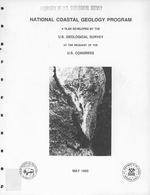More than 50 percent of the U.S. population currently live within 50 miles of an ocean, Great Lake, or major estuary. According to forecasts, the concentration of people along our coastlines will continue to increase into the 21st century. In addition to residential and commercial buildings and facilities worth tens of billions of dollars, the coasts and associated wetlands are natural resources of tremendous value, with estimates in excess of $13 billion per year for commercial and recreational fisheries alone. Human activities and natural processes are stressing the coastal environment. * Each of the coastal states and island territories is suffering problems related to coastal erosion. * Deterioration of wetlands is widespread and of great public concern. * Pollutants carried by rivers or runoff are discharged directly into coastal waters and accumulate in the sediments on the sea floor, in some areas causing damage to living resources and presenting a threat to public health. * Onshore sources for hard-mineral resources, such as sand and gravel used for construction purposes, are becoming increasingly difficult to find. New sources are being sought in coastal waters. Coastal issues will become even more important into the next century if sea level is significantly influenced by climate change and other factors.


